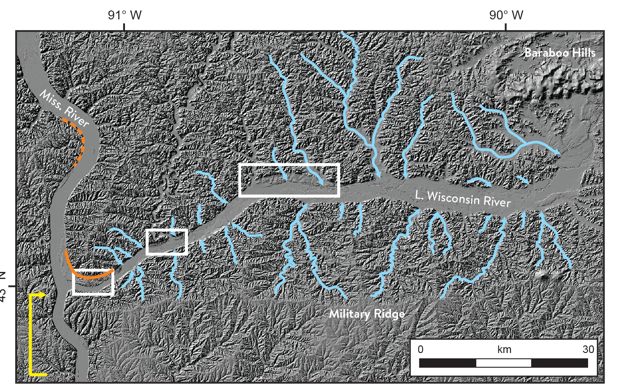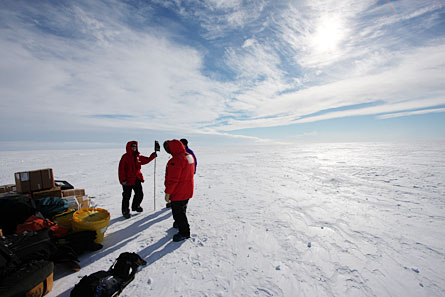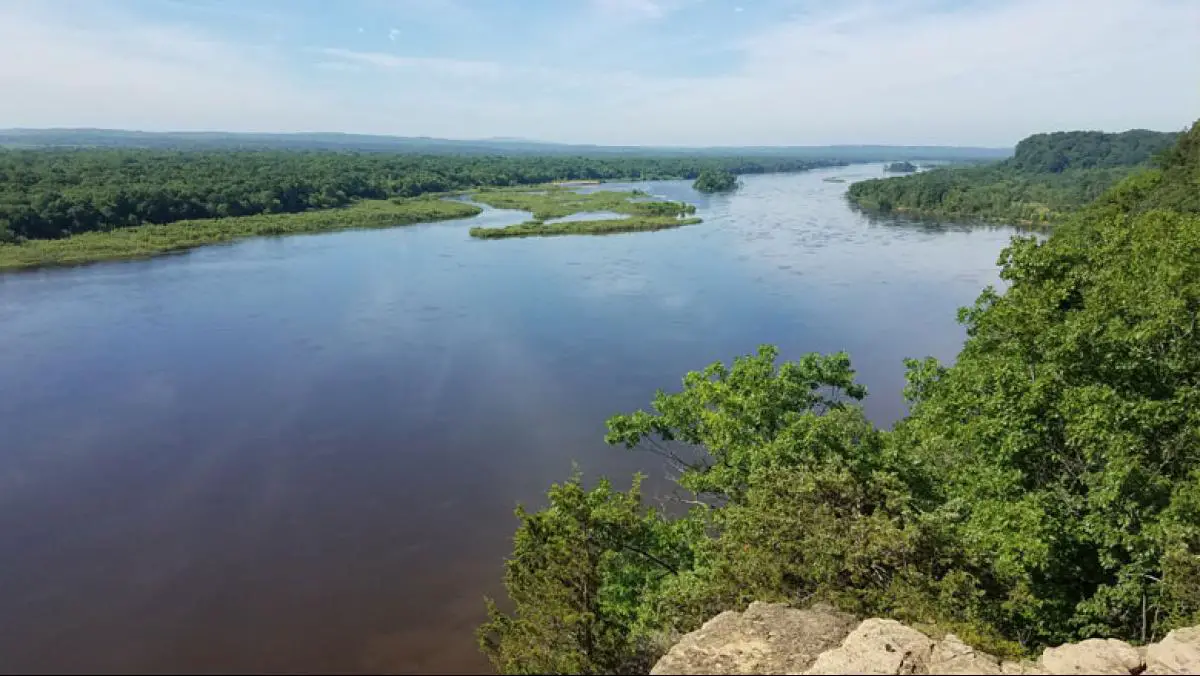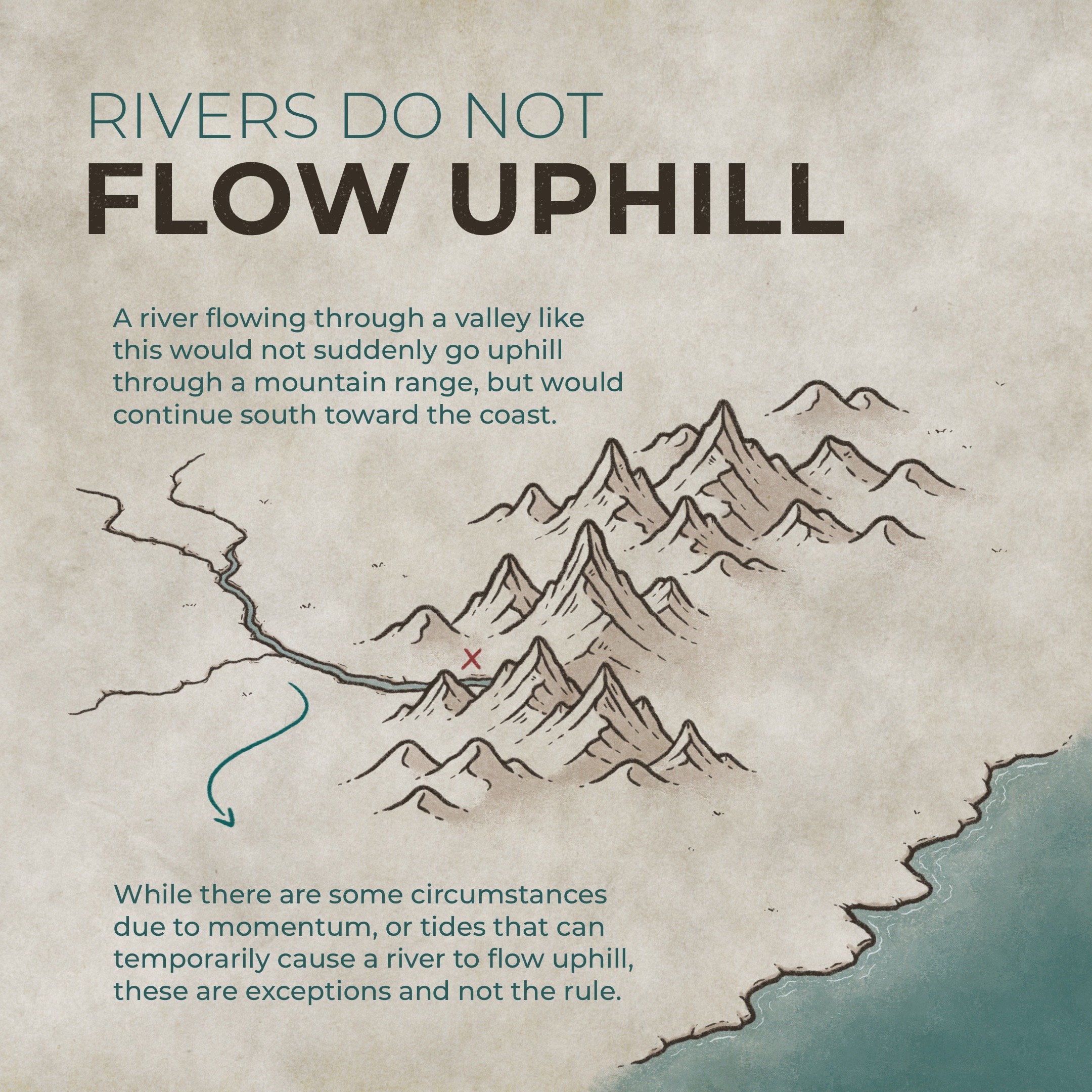Rivers naturally flow downhill due to the pull of gravity, guiding water from high elevations to low. However, under specific conditions, a river may appear to flow uphill, creating an optical illusion. This phenomenon is rare and often involves external forces or human intervention. Can Rivers Flow Uphill?
- Rivers flow downhill due to gravity
- Rivers flow downhill toward larger bodies of H2O
- Rivers use the path of least resistance from high to low levels
- Man-made pumps can reverse river flow
- Optical illusions can mimic uphill flow
- Tidal forces can mimic uphill flow
- Locks/dams can mimic uphill flow
- Terrain changes can mimic uphill flow
Rivers cannot naturally flow uphill because gravity causes water to move from higher elevations to lower ones. However, there are certain conditions where rivers might seem to flow uphill. These situations usually involve optical illusions, changes in the landscape, or human-made engineering solutions like locks and pumps that can temporarily redirect the flow. Additionally, natural forces such as tidal action can push water upstream, creating the illusion of an uphill flow. Without these external forces or human intervention, rivers will always follow the path of least resistance, flowing downhill toward the ocean.

Terrestrial Visitors: Can Rivers Flow Uphill?
Many of us have probably looked at a river and marveled at the natural wonders of the world. But did you ever stop and wonder, can rivers flow uphill? At first, it might seem impossible and contrary to everything we know about gravity and the way rivers flow. However, nature is full of surprises! There’s a complex process in which a river can appear to run uphill, defying our usual understanding of how water moves.
Generally, most equator-bound rivers flow downhill, following the natural terrain and being pulled by gravity toward the ocean. But what if I told you there are situations where rivers flow in a way that makes them appear to go in the opposite direction? In very specific areas, under certain conditions, a river can seem to flow uphill.
One such natural phenomenon involves what’s known as local topography and wind patterns. In this scenario, strong winds push the river’s surface water against gravity, making it look as though the river is running uphill. Though temporary, this visual trickery illustrates how dynamic and complex the natural world can be.
Another way rivers flow uphill is through a process called hydraulic jumps. This occurs when water moving at high velocity encounters a sudden elevation change, causing it to momentarily “jump” to a higher level. Although the river itself is still obeying the laws of gravity, the interaction between the water’s velocity and the terrain creates the illusion of uphill movement.
Sometimes, the area around a river can create conditions that make it seem like the river is flowing backward. For instance, during heavy rainfalls or flooding, water can overflow and spread in multiple directions, including back toward higher ground.
Interestingly, rivers flow uphill during volcanic activities as well. When a volcano erupts under a glacier, the melted glacial water can create subglacial rivers that flow uphill because of the underground pressure. This is how volcanic activity shows us another extraordinary way a river can go against the usual direction.
Another fascinating example involves the famous waterfall phenomenon where waterfalls reverse direction due to strong winds. Under particular weather conditions, wind speeds can be so powerful that they force the water from waterfalls to flow back up the cliff!
These phenomena remind us that the natural world is full of surprises and that there’s much more to learn about how rivers flow and the various ways they can defy our expectations. If you’re excited about these topics, you’ll love our next sections where we’ll explore concepts like capillary action in the natural world, waves and siphons, and the mysterious river phenomenon in Antarctica. We’ll investigate if rivers can flow uphill in these unique ways.
Exploring Capillary Action in the Natural World
It’s a fascinating question to consider: can rivers flow uphill or even run uphill? To explore this intriguing concept, we need to first understand the phenomenon of capillary action. Capillary action is a process that allows liquid to move through narrow spaces without the assistance of external forces and is primarily observed in thin tubes and porous materials.

This natural process can make it seem like water is defying gravity, but could a river perform the same feat? Capillary action occurs due to the forces of cohesion and adhesion; cohesion is when water molecules stick to each other, while adhesion is when water molecules stick to other materials.
These forces cause water to climb up the sides of a narrow tube against the force of gravity, allowing it to flow uphill in certain conditions.
While rivers themselves typically don’t run uphill, capillary action provides insight into how water can appear to flow against gravity in specific environments.
For example, when you dip a paper towel into a puddle of water, you’ll notice the water climbs up the paper towel. This is capillary action at work. Though on a much smaller scale than a river, it serves as a miniature example that explains how water can seemingly defy gravity through this process.
Another compelling example involves water moving through plant stems. Tiny tubes in the plant, known as xylem vessels, assist water in traveling from the roots to the leaves, enabling plants to grow high and strong. Without capillary action, this essential life process wouldn’t be possible.
In colder environments, water can freeze into ice, which can also demonstrate unusual behavior we might not generally think about. When ice forms and starts to melt, it can create intricate channels through which water can run uphill briefly before gravity takes over. Therefore, while a river can’t maintain a continual uphill flow, specific natural conditions and phenomena allow water to exhibit fascinating gravity-defying movements.
This discussion ties into several intriguing questions we could ask about the movement of water on Earth. How do waves and siphons play a role in water’s diverse behaviors? We’ll explore this in our next topic, “Waves and Siphons: Understanding Earth’s Water Movements.” In the realm of science news, discoveries about water and its characteristics continue to capture our curiosity. Investigating whether a river can defy gravity challenges us to look deeper into the natural world and observe how plants and other organisms harness water through mechanisms like capillary action.
Waves and Siphons: Understanding Earth’s Water Movements
When we think about the way water moves, it’s fascinating to consider if rivers can flow uphill. While it might seem impossible, the natural world is full of unexpected surprises. In our exploration of waves and siphons, we’ll discover some interesting phenomena that show how water behaves in curious ways. Let’s dive into some incredible concepts like capillary action and how it plays a role in the water flow of rivers and other bodies of water.
Water is a dynamic force in nature, constantly on the move. When we talk about waves, we’re looking at a type of energy transfer that causes the surface of water, like in oceans and lakes, to undulate. This movement isn’t just limited to large bodies of water.
Rivers, which continuously flow over the Earth’s surface, are shaped by their bedrock and the path that water carves through it. As rivers wind their way downhill, gravity plays a key role. But did you know that sometimes water seems to defy gravity through natural processes?
One fascinating example is through siphons. A siphon can force water to move against gravity, creating the illusion that it’s flowing uphill. When the end of a siphon is lower than the liquid level at the start, water will continue to move through the tube, effectively allowing it to climb heights it normally wouldn’t. Think of it as water understanding a shortcut to get from one point to another, sometimes moving in ways that seem counterintuitive.
Another interesting concept is Capillary Action. This phenomenon occurs when water moves within the small spaces of a porous material, like soil or certain types of rock. This action is driven by the adhesive force between the water and the material, combined with the cohesive properties of the water molecules themselves. It’s why you might sometimes see water rising through the fine cracks of a rock or the tiny spaces between grains of soil, defying the downward pull of gravity in seemingly magical ways.
Understanding water in the natural world means appreciating its many unique properties and behaviors. For example, in places where bedrock has special formations, rivers might show unusual flowing patterns. Capillary Action can cause water to move upwards against gravity, giving us insights into how plants get water from the soil through tiny roots. These minute movements teach us a lot about the broader ways in which water acts and reacts within our environment.
In conclusion, waves and siphons are incredible demonstrations of how water moves. They remind us that, even in the predictable world of physics, there’s always room for nature to surprise us. So, whether it’s a river flowing across its rocky bed or water finding a way to rise through capillary action, the natural world shows us that water can flow in many intriguing ways.
Answering the Question: Is It Possible?
First, let’s talk about the basics. Gravity is the main reason why rivers flow in one direction—downhill. Water naturally seeks the lowest possible point on the surface of the Earth. This is why we see rivers flowing from higher elevations to lower ones, and eventually toward the oceans. Rivers like the Mississippi are classic examples of this kind of flow, traveling from the northern states all the way down to the Gulf of Mexico.
However, there are exceptional circumstances where it seems like a river is flowing uphill. These optical illusions can occur in specific environments like valleys surrounded by hills. For instance, if you’re driving through the Mississippi Valley and come across what looks like uphill-flowing water, it’s likely an optical illusion caused by the slant of the surrounding landscape. Your brain interprets the direction of the river incorrectly due to the alignment of the ground’s top surface.
Another fascinating instance involves the capillary action and siphons. In these cases, small amounts of water can seem to defy gravity. For example, a siphon allows water to move uphill from one container to another, provided the endpoint is lower. This is due to the cohesive and adhesive forces between the water molecules and the surfaces they come in contact with. Capillary action, which can be seen in thin tubes or small gaps, also enables water to flow against gravity for a short distance.
Let’s not forget the phenomena in outer space. In a zero-gravity environment, like aboard the International Space Station, there’s no traditional “uphill” or “downhill.” Water can move in any direction, including what would be considered uphill on Earth. Astronauts often demonstrate how water behaves in space, moving in all directions without gravity’s pull.
While rivers like the Mississippi aren’t going to start flowing uphill through the Mississippi Valley any time soon, understanding the varied and complex behaviors of water helps us appreciate the detailed science of our natural world. So, the final answer to our question isn’t purely black and white. While rivers don’t flow uphill under normal terrestrial conditions, unique scenarios do exist where water can move in unexpected directions. Stay tuned for our next post, where we’ll discuss the intriguing Antarctica river phenomenon. Additionally, don’t forget to browse other Earth science questions on Stack Exchange.
Antarctica River Phenomenon

Did you know rivers can sometimes appear to flow uphill? It’s a fascinating phenomenon, and one of the most intriguing examples of this occurs in the frigid expanse of Antarctica. Antarctica, a vast and mysterious continent, gives us a unique glimpse into how rivers and lakes behave under extreme conditions. One of the most interesting occurrences on Earth can be seen here, where you can witness water movements that might seem to defy the laws of nature.
This phenomenon is essentially due to the process of high-pressure conditions and unique geological formations that create an illusion of rivers flowing uphill.
In certain valleys of Antarctica, the landscape has been shaped in such a way that it influences the river flow. During August, the icy month when conditions reach their peak, you’ll find frozen lakes and rivers playing tricks on our eyes.
The process involves glacial melting where the water from the ice finds its way through valleys and creates temporary rivers. These rivers often end up in a lake that sits in a lower area, collecting the meltwater over several kilometers (km).
The lakes are often completely frozen at the surface, while the meltwater travels underneath, seemingly flowing uphill due to the pressure difference created by the ice overlay. The interplay between ice, pressure, and the earth’s gravity causes this illusion. The earth’s tectonic activity contributes to the formation of such valleys, and the presence of thick ice layers above can force the rivers to take paths that seem unusual.
What makes it appear as if the rivers are flowing uphill is a mix of factors including the steep gradients hidden beneath the ice and the high pressure from the weight of the ice above. This pressure forces the river water to move through crevices and along paths that defy our typical understanding of river flow. August is the prime time to study this phenomenon because it’s the period when the glaciers are at their thickest and the pressure is at its highest.
It’s also the time when the differences in temperatures between the surface and the deeper layers are most impressive, further interacting with the flow of water. This natural wonder exemplifies how the extreme conditions on Earth can produce surprising results. As rivers navigate through the unique valleys of Antarctica, we get to see examples of how the earth’s geology and climate work together in ways that might seem magical but are entirely scientific.
To fully appreciate these rivers and valleys, one must understand the earth’s process at work. The high-pressure ice formations pushing water along unexpected routes is a testament to the power and mystery of our planet. It’s these incredible phenomena that keep scientists fascinated with Earth’s secrets and encourage us to continue exploring our world.
Impact of Infrastructure on Water Flow in Rivers
Do rivers really run uphill? This intriguing question sparks much curiosity and offers a platform to delve deeper into the realms of science. Surprisingly, the answer is yes, rivers can indeed defy gravity and flow uphill, and the secret lies in the impact of infrastructure on their flow and direction.
Ancient river valleys, for instance, provide vital clues. Do bear in mind, however, that science also raises more questions than it can answer. However, the natural forces of the earth do exert a significant influence on river dynamics, allowing water to move in seemingly impossible directions, including uphill.
When humans construct an infrastructure, such as a dam or canal in a river valley, it affects how water in the river can flow. In certain situations, we can create conditions where rivers run uphill. The role of the earth’s natural phenomena is not to be overlooked.
Phenomena like tides, winds, and the earth’s rotation all impact the water flow in rivers, often causing them to deviate from their usual downhill course. These are not odd exceptions. To answer definitively – do rivers run uphill? Yes, they can, and they do!
Capillary action is another fascinating aspect of river flow. It lets water do seemingly miraculous things in narrow spaces. It’s one-way water can travel uphill, defying gravity’s pull. Though it’s a lesser-known aspect, it is an important one in explaining how rivers can flow uphill. Similarly, varying levels of salt and freshwater also impact the flow dynamics of a river. Saltwater is denser, and therefore it sinks, displacing freshwater, and causing it to flow upwards.
Not just physical structures and natural phenomena, but even temperature variations can affect river flow. Take the peculiar water flow we observe on Earth’s Antarctic river, for example – caused by differences in temperature, it appears to run uphill.
These small miracles of nature bring to light fascinating science news and provide avenues for research and discovery. By understanding the mechanisms behind how rivers flow, we’re better equipped for water management and preserving our precious water resources.
While it may seem counter-intuitive, rivers can and indeed do run uphill if the circumstances are right. Whether it’s through human-made infrastructure or naturally occurring phenomena, water in rivers finds ways to flow uphill.
When it comes to the captivating world of science, there is always more to learn and discover. In our continuous quest for knowledge, we will stumble upon many more “rivers” that defy the laws of gravity and flow uphill, and with each finding, we will further enrich our understanding of the world around us.
Conclusion:
While rivers typically flow downhill because of gravity, certain unique situations can make it seem like they are flowing uphill. Elements such as tidal forces, human-made structures, and variations in the landscape can temporarily change the direction or appearance of a river. Nevertheless, in the absence of these factors, rivers consistently move downhill toward lower elevations and eventually into larger bodies of water. Recognizing these exceptions reveals the intriguing dynamics of water movement in nature.
References:
Puget Sound Navy Museum–Capillary Action
FAQ’s
- Can a river flow uphill?
No, rivers cannot naturally flow uphill due to gravity, but certain factors like tidal forces or man-made structures can create the illusion of uphill flow. - What causes a river to appear as if it’s flowing uphill?
Optical illusions, tidal action pushing water upstream, and engineering solutions like pumps or locks can make it seem like a river is flowing uphill. - Do tidal forces play a role in reversing river flow?
Yes, tidal forces can temporarily push water upstream, creating the appearance of a river flowing uphill. - Can man-made structures make a river flow uphill?
Yes, dams, locks, and pumps can artificially alter the flow of a river, causing water to move uphill for short distances. - How does terrain affect a river’s flow direction?
Terrain features like ridges or valleys can sometimes create the optical illusion that a river is flowing uphill, though it’s still following gravity. - Is uphill river flow common in nature?
No, uphill river flow is not a natural phenomenon. It only occurs under specific conditions like tidal influences or through human-made systems. - Can river flow be permanently reversed?
Permanent reversal of a river’s flow is rare but can occur through major engineering projects or shifts in the landscape. - Does river flow always lead to the ocean?
Most rivers flow toward larger bodies of water like lakes, seas, or oceans, but their path is always downhill without external intervention.



